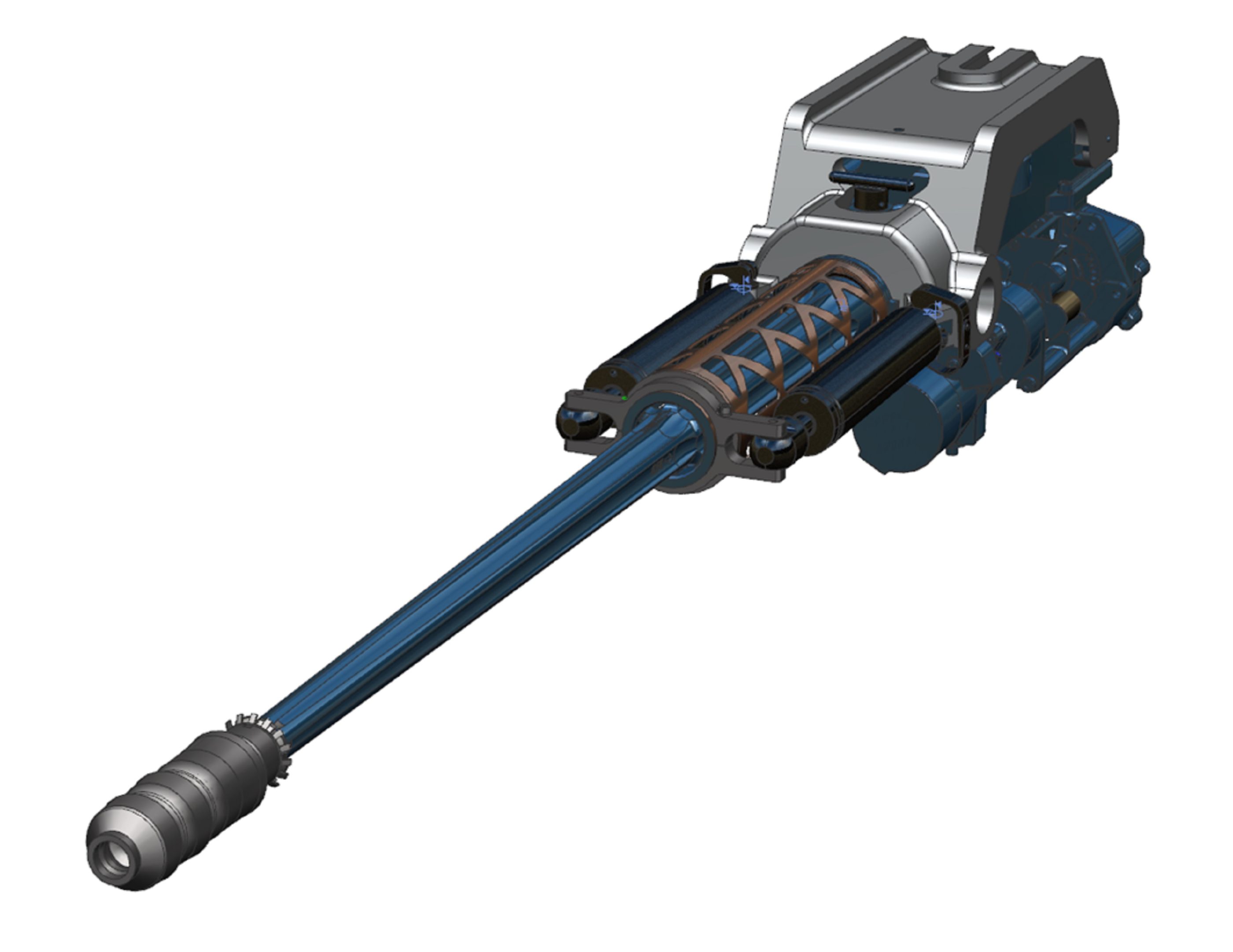Northrop Grumman is nearing production of a new 20-millimeter chain gun, an improved version of the M230 Apache nose cannon the company hopes will earn its way onto the U.S. Army’s Future Attack Recon Aircraft (FARA).
Called the “Sky Viper,” the chain gun system — the gun itself, ammunition, feeding and control mechanisms — weighs less, fires more rapidly and has a lighter recoil than the legacy cannon. It is also designed with greater accuracy and simpler, easier-to-maintain mechanisms than a rotary cannon, according to Quinn Canole, deputy director of Northrop’s guns operating unit.

Army aviation officials have already given a nod to integrating the XM915 20mm Gatling gun onto both FARA prototypes currently being readied for a head-to-head flyoff. Either Bell’s 360 Invictus or Sikorsky’s Raider X will be chosen to fill the role vacated by retirement of the OH-58D Kiowa Warrior and the Army currently has plans to integrate the XM915 onto both.
Both cannons are under development in partnership with, and partially funded by, the Army’s Development Command Armament Center (DEVCOM), Canole said.
“The work that we are performing on the 20mm Sky Viper chain gun is also being funded by DEVCOM with potential use for multiple applications, including potential competitive solutions to the GD XM915 Gatling gun,” Canole told Vertical in an email. “We believe that based on our Bushmaster family of Chain Gun’s past performance (with the Apache and several ground combat platforms around the world), accuracy, and reliability, it would benefit the Army to consider our 20mm chain gun as an alternative to the XM915 for FARA.”
Canole said Northrop’s single-barrel chain gun configuration is more reliable and easier to maintain than a Gatling-style gun with multiple rotating barrels. While the Army’s AH-64 uses a chain-driven M230 auto-cannon, the Marine Corps AH-1 SuperCobra sports a General Dynamics M197 three-barreled Gatling-style minigun. Both are externally powered by the aircraft’s electrical system.
“This 20mm cannon is intended to provide superior performance when compared to legacy Gatling guns,” Canole said.
“Where Gatling guns are geared primarily toward area suppression, ours is geared toward a high degree of accuracy,” Canole added. “So, essentially fewer shots fired and more shots hitting the target.”
By boosting accuracy, the Sky Viper should require fewer “stowed kills” — the amount of ammunition required to destroy a target. Northrop also is looking at specialty munitions for use against various targets, including enemy troops, unmanned aerial vehicles, ground vehicles and other helicopters, Canole said.

“We are also working with DEVCOM to provide a competitive solution so that following the initial builds of the prototypes, they can have an evaluation between the two weapons on which one provides the lowest [size, weight and power], the highest accuracy and really is the best fit for the platform as a whole,” he added.
Northrop’s cannon has passed its initial design review by the Army and the company has performed risk-reduction testing on non-firing prototypes to ensure the cannon’s subsystems are operating properly before live rounds are sent through it.
“We are initiating the first production article right now, which will transition into full-scale live firing here in the late spring, early summer, at which point it will be handed over to the government to go into additional testing on their side,” Canole said.
The Sky Viper gun is one in a suite of existing and developmental mission system components, sensors and avionics technologies Northrop is offering to the Army to keep its hand in development of the Future Vertical Lift family of advanced rotorcraft.
Raytheon and Northrop initially lent their combined weight to a joint FARA effort led by Karem Aircraft, which pitched its patented Optimum Speed Tiltrotor (OSTR) technology for the program. The team was ultimately passed over by the Army in favor of Bell and Sikorsky.
Northrop rummaged its shelves for “existing content that is directly applicable to the [multi-domain operation] requirements we’re seeing flow out of the Army,” said Brendan Kelly, director of Future Vertical Lift for Northrop Grumman Mission Systems.
“We have taken an enterprise approach,” Kelly said during the video call. “We have a diverse and comprehensive suite of capabilities within the company. At no time do we assume the Army is going to buy everything from Northrop Grumman. What is going to be important is the integration of those systems so we can optimize the size, weight and power commitments that are made to the platforms. They need to earn their way on.”









